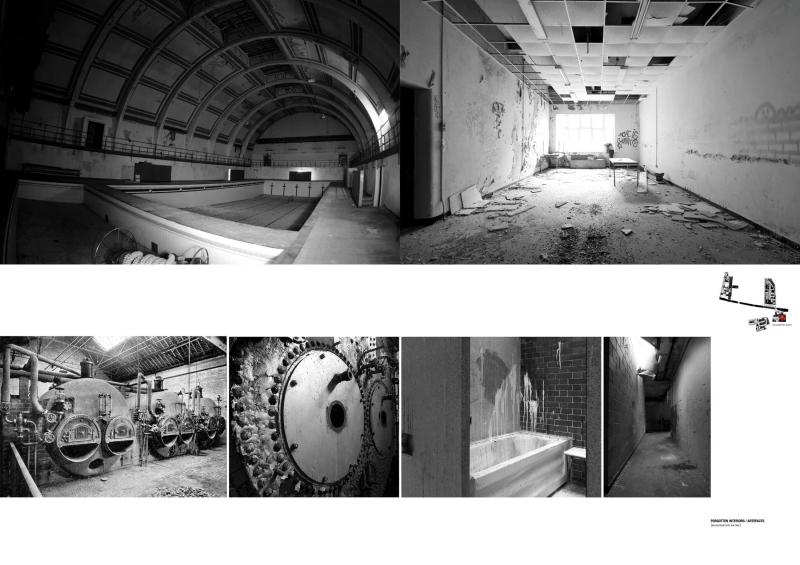
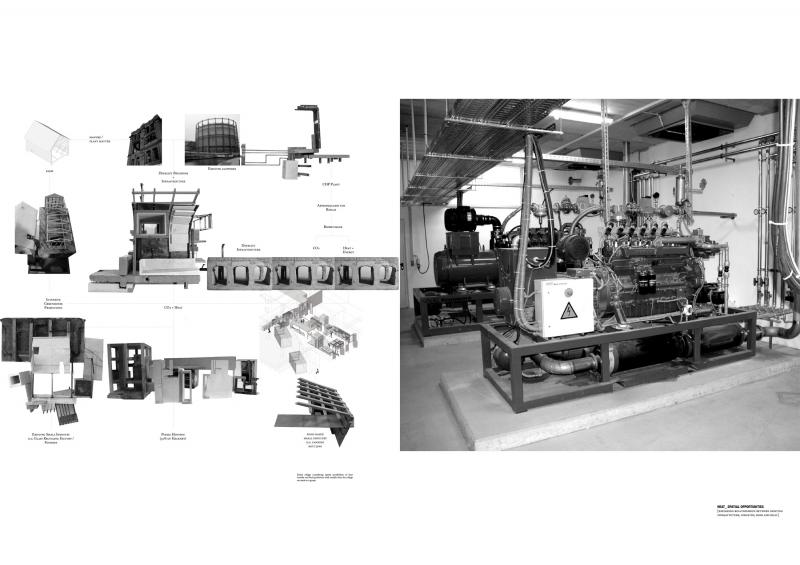
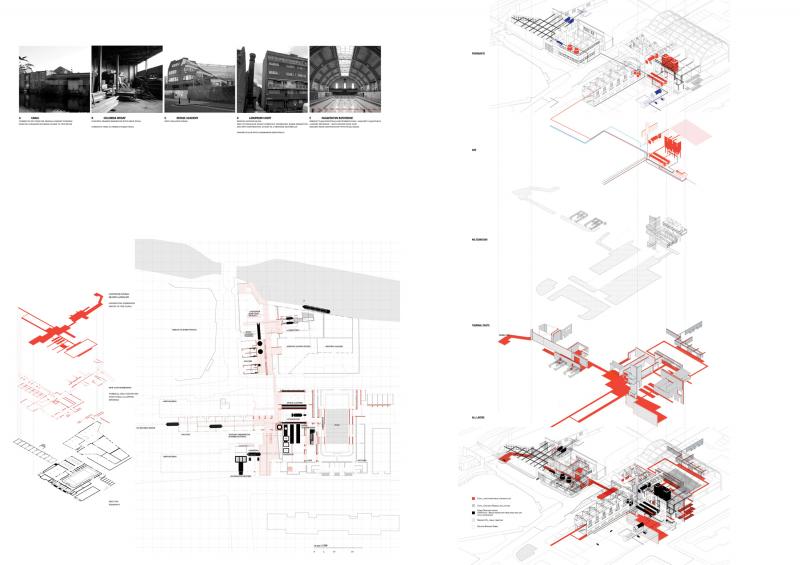
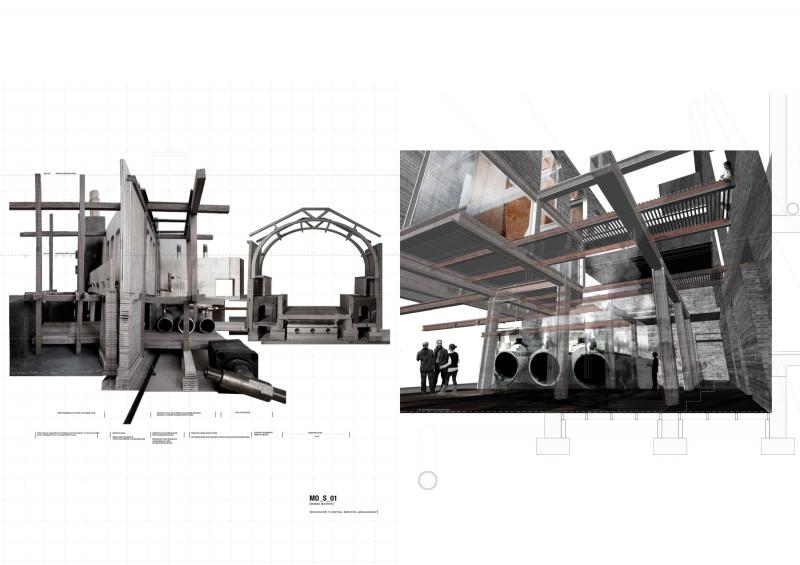
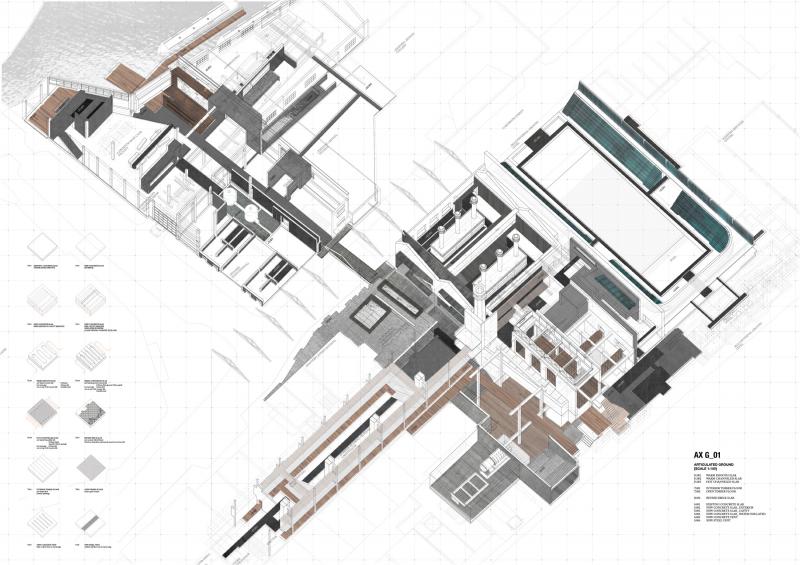
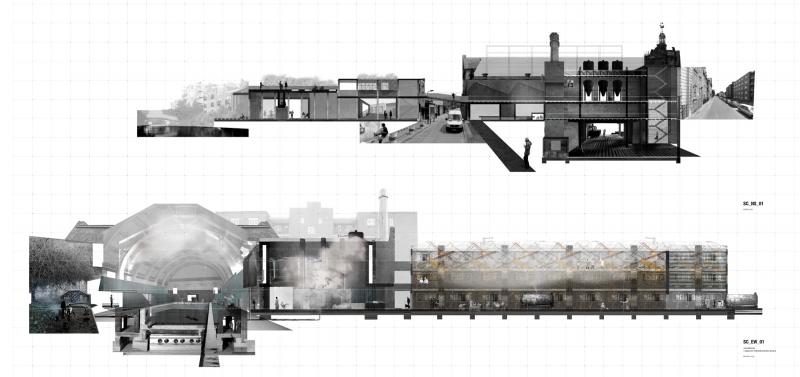
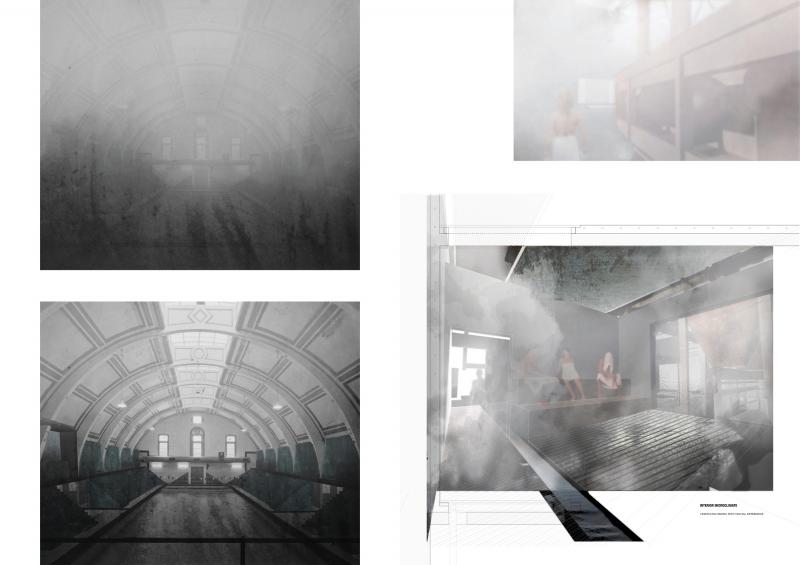
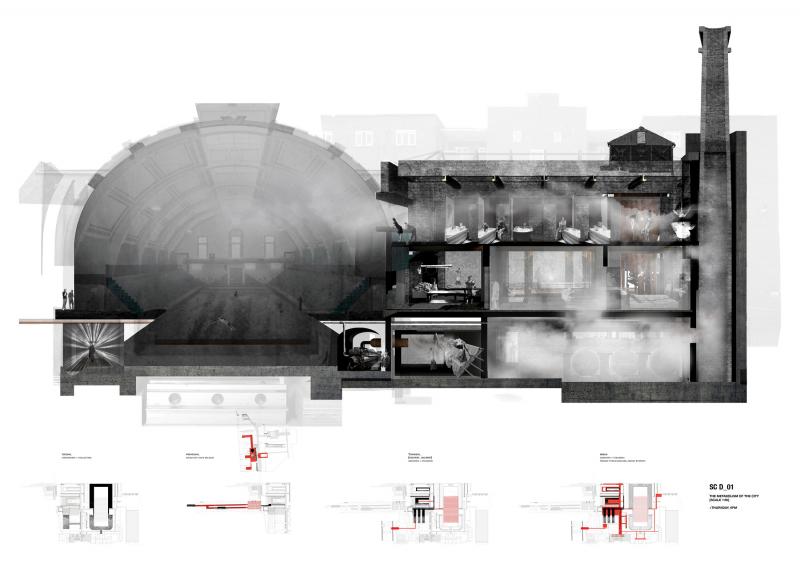
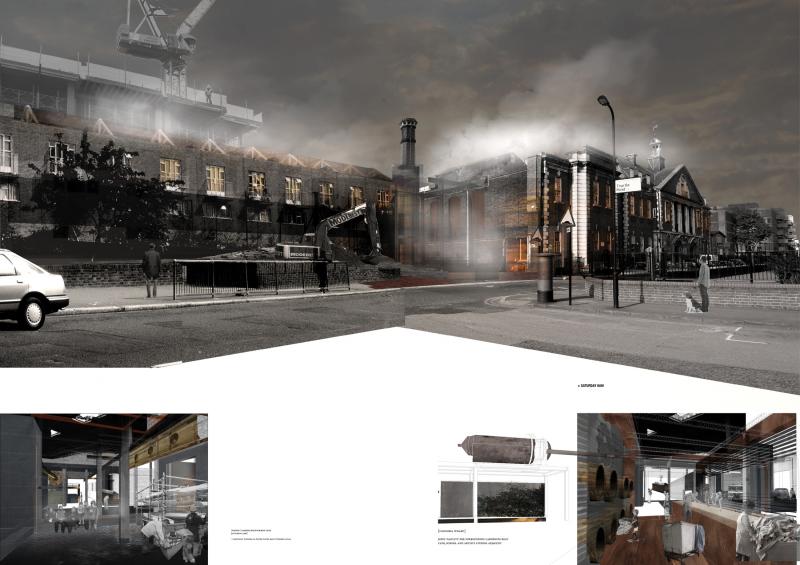
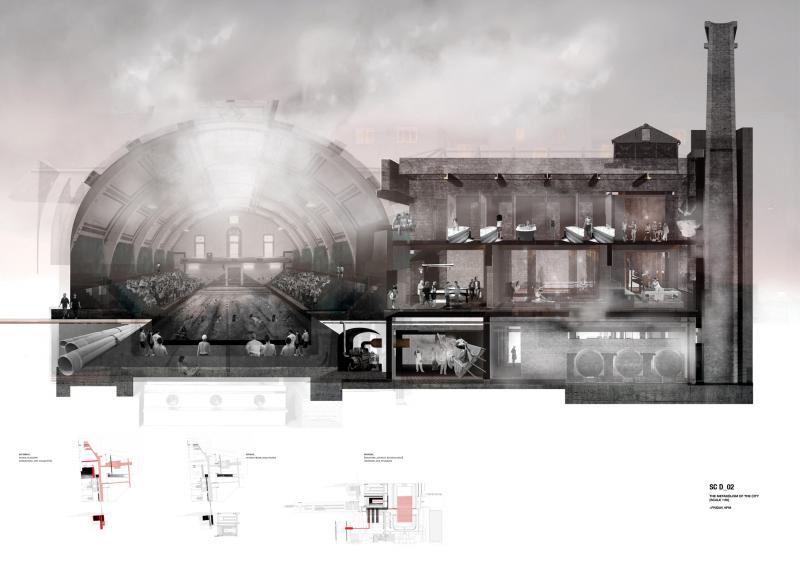
Revealing and reactivating forgotten industrial artefacts and empty volumes of Haggerston Bathhouse, through the insertion of a new district heating system.
Fed on the digestion of Hackney foodwastes, the machine is stretched out, transforming disused canalside spaces into a new urban corridor. The articulated service spine augments existing facilities to establish a series of domestic social spaces that retain, re-utilise and re-circulate excess heat.
The amount of organic waste produced by a city, normally invisible, is revealed through its recycling into spatial experience: heat, condensation, the hissing of steam, the rushing of water, the trickling of sweat. Like the stomach of the city, the machine devours its meals, steaming the city's excess. It recycles its own excess into a localised microclimate - hotter, wetter, cooler, as dictated by the metabolism of the city. Reaching its limit at the end of each weekly cycle, the machine's release becomes the expression of the city itself.